Chrome browser is extremely popular and has many unique features such as app shortcuts, built-in task manager, pinned tabs and synchronized bookmarks across other devices. It has a large extension base, integrates with other Google products and provides a cross-platform browser. A common complaint about chrome is that it uses high memory. This reduces browser efficiency and affects user experience. Chrome browser memory issues can be solved with simple methods.
Fix 1: Close unused tabs
Google Chrome slows down after heavy use or after a while. We always tend to have many tabs open in our browser. All open tabs occupy a block of RAM memory. Many unused tabs that are open and no longer needed or used frequently must be closed. Often, we don't close the tab and it feels like the browser takes a long time to process the user's request. The simple solution is to close unnecessary tabs in order to free up RAM memory.

When a tab is no longer in use, simply close the tab to save memory and facilitate faster access.
Fix 2: Hardware Acceleration
Hardware acceleration helps minimize RAM usage and processor workload. A dedicated graphics card must be installed to perform hardware acceleration.
Step one: Open the chrome browser.
Step 2: Click the three-dot button (menu button) in the lower right corner of the browser.
Step 3: Go to Settings and click on it.

Step 4: The settings screen will open. Go to Advanced Settings. Find System and click

Step 5: Enable"Use when available Hardware Acceleration" button.
Step 6: After turning on the button, restart the Chrome browser.
Fix 3: Chrome Task Manager
Chrome browser has a built-in task manager that allows us to check the memory consumed by processes running in the browser. If the browser is slow, we can check which processes are using the most memory and which processes are insignificant. The results will help in making the decision to close the tab.
Step 1: Open the Chrome browser
Step2: Press the SHIFT ESC key at the same time to open the Chrome Task Manager .
Step 3: CheckMemory usage

##Step 4: Select the unwanted processes that are using more memory and click to end the process.


Step 1: In the chrome browser, go to the menu (three dots in the upper right corner)
Step 2 Steps: Go to Settings. Or you can enter chrome://settings/
in the chrome browser. Step 3: Click Advanced Settings
Step 4: Scan Reset and Clean and click

Step 5: The Reset and Clean screen pops up and click Clean Computer

Step 6: In the Clean Computer screen, Click the Find button which will give you a detailed report of the malware (if present) and its removal.

Fix 5: Get rid of unwanted extensions
The Chrome Web Store has many extensions that are useful in different ways. We can add these extensions in chrome browser. These extensions take up a lot of RAM space, thereby slowing down the browser's processing speed. It is necessary to remove unnecessary extensions to speed things up.
Step 1: To remove an extension on Chrome, go to Settings and scroll down to Extensions, or you can type chrome://extensions/ and press Enter.
Step 2: Search for unused extensions and click the Remove button. Or you can check chrome task manager to find which extensions are using large memory space.

Step 3: After clicking Delete, the extension in the system will be uninstalled to free up space.
Fix 6: Preload page service
Step 1: Type chrome://settings/cookies or go to chrome browser Go to Settings and scroll down and click Privacy and Security and select Cookies and other site data.
Step 2: Scroll down Cookies and other data. You'll find preloaded pages for faster browsing and searching. continue.

#This service allows us to obtain in advance the IP addresses of pages you may visit.
Fix 7: Reset to default settings
Step 1: Enter chrome://settings/reset in the address bar and press Enter . Or you can go to settings and scroll to find the reset and cleanup window.
Step 2: In the Reset and Cleanup window, click to restore the settings to their original defaults.

Step 3: Click Reset Settings and Chrome will be set to its default settings.

This will clear all junk extensions and cookies from memory.
The above is the detailed content of How to minimize memory usage in Chrome? The 7 most effective methods.. For more information, please follow other related articles on the PHP Chinese website!
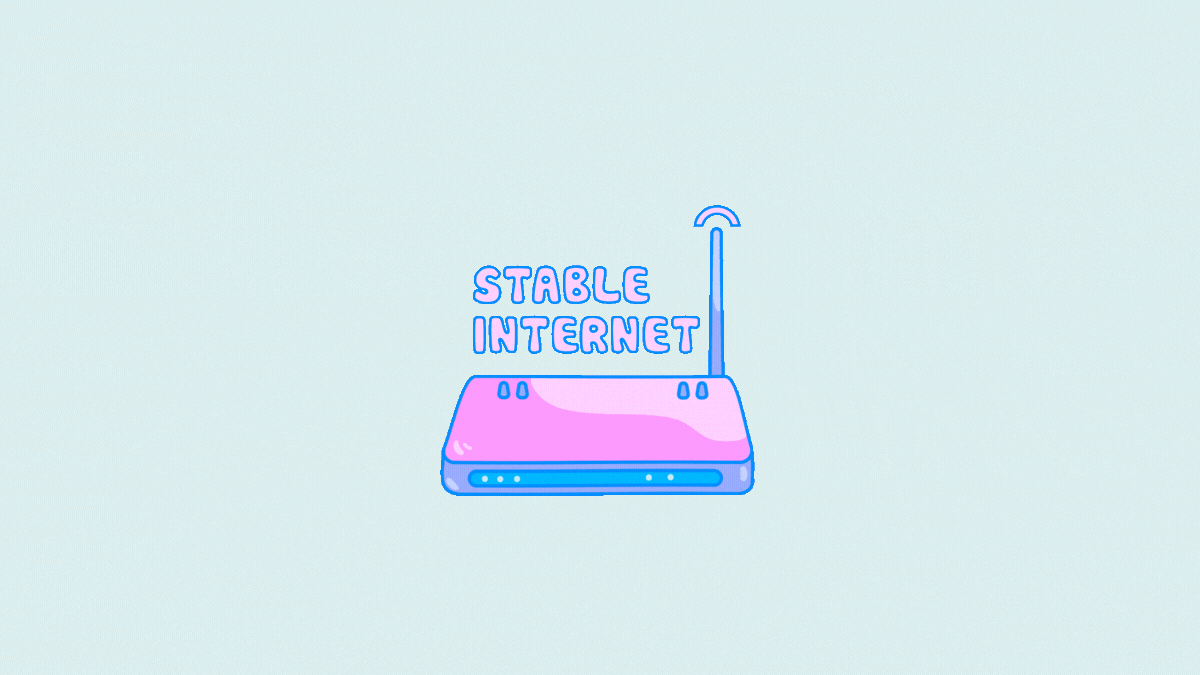 Microsoft Teams 不显示图像?怎么修Apr 16, 2023 am 10:28 AM
Microsoft Teams 不显示图像?怎么修Apr 16, 2023 am 10:28 AM解决 Microsoft Teams 无法加载或显示图像的问题的 10 种方法如果您收到的图像无法在 Microsoft Teams 中加载,并且您看到的只是一个图像图标,而不是实际图像应加载到的位置,那么以下修复程序应该可以帮助您解决此问题。修复 #1:检查您的互联网连接当您遇到无法在 Microsoft Teams 上加载图像时要检查的第一件事是查看您的计算机是否已连接到有
 属性中没有位置选项卡:如何启用它Apr 13, 2023 pm 11:16 PM
属性中没有位置选项卡:如何启用它Apr 13, 2023 pm 11:16 PM文件夹属性为用户提供详细信息,例如创建日期、文件夹名称、大小等。但是,有时您可能会在Windows文件夹的属性中遇到“位置”选项卡。因此,我们将引导您完成故障排除和重新启用它的步骤。或者,您可以查看我们关于修复 Windows 11 上的文件夹访问被拒绝问题的详细指南。为什么在文件夹属性中找不到位置选项卡?有几个因素可能导致 Windows 11 上文件夹属性中缺少位置选项卡。最值得注意的是:文件夹不支持移动 – 有些文件夹支持移动到另一个位置,而有些则不支持。默认情况下,支持从一个位置移动到另
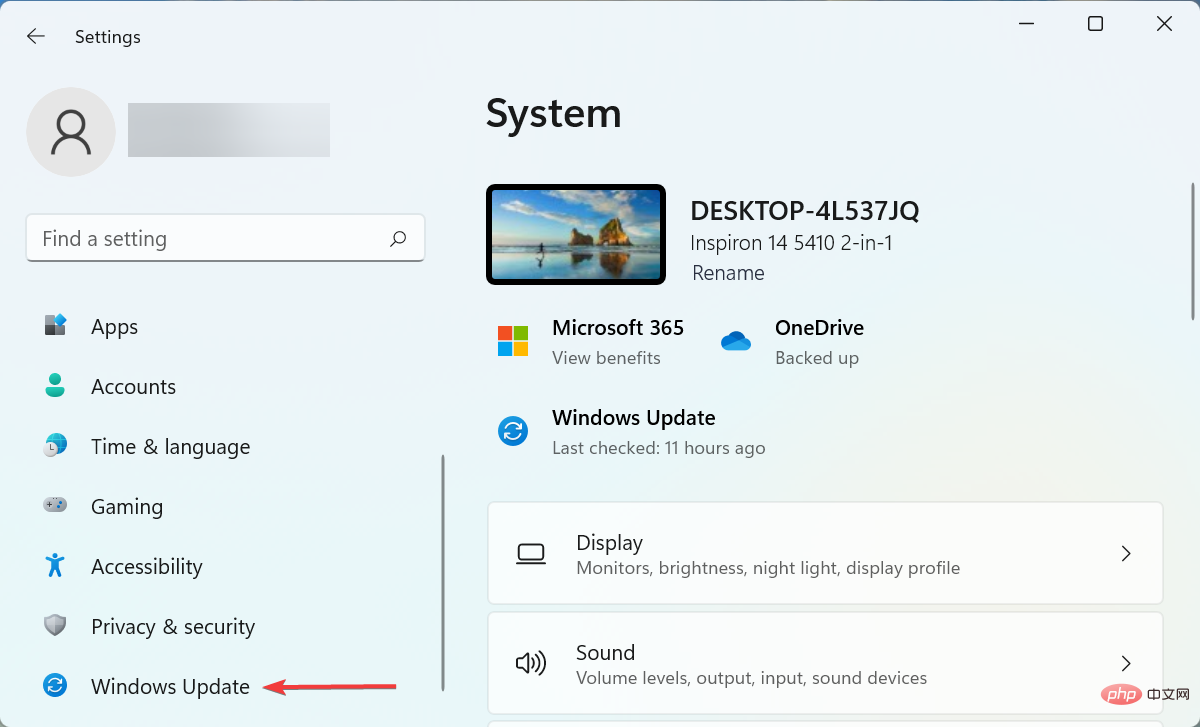 如果设备管理器中缺少电源管理选项卡,则进行 7 个修复Apr 14, 2023 pm 07:04 PM
如果设备管理器中缺少电源管理选项卡,则进行 7 个修复Apr 14, 2023 pm 07:04 PM设备管理器是Windows中列出所有连接设备的实用程序。此外,您可以在此处识别有问题的硬件并对其进行故障排除,甚至可以更改电源设置。但是,对于某些用户,设备管理器中缺少电源管理选项卡。这可能由于多种原因而发生,并且由于无法进行更改而可能会影响您的体验。在这种情况下,您将无法配置系统如何控制设备的电源以及设备是否可以唤醒PC。因此,请阅读以下部分以了解如果Windows11的设备管理器中缺少电源管理选项卡该怎么办。如果设备管理器中缺少电源管理选项卡,我该怎么办?1.更新Windows按Wind
 如何解决 Windows 10 中的 Rundll32.exe 错误Apr 14, 2023 pm 04:25 PM
如何解决 Windows 10 中的 Rundll32.exe 错误Apr 14, 2023 pm 04:25 PMRundll32.exe文件是一个系统进程文件,与Windows10的功能相关。它使用DLL(动态链接库)库,该库包含在Windows系统上一次运行的多个程序重复使用的代码。代码的重复使用有时可能会导致错误。此问题的主要原因是删除了rundll32.exe文件、损坏的DLL文件、Windows注册表中不正确的DLL条目等。在本文中,我们将了解发生了哪些不同类型的rundll32.exe错误以及如何处理解决这些问题。用户面临的不同Rundll32.exe错误发生run
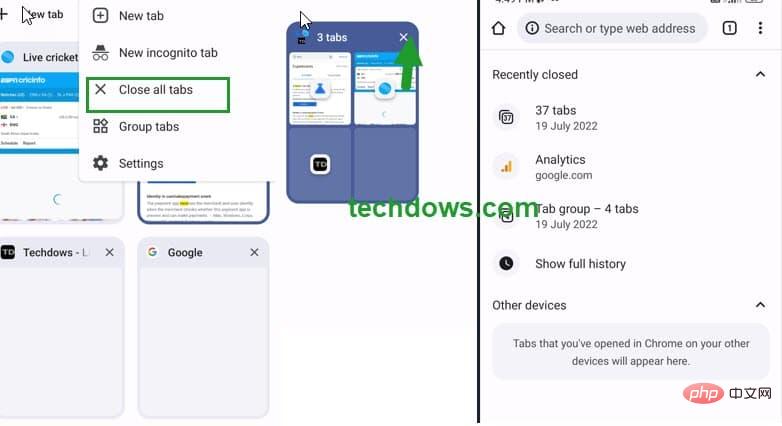 Android 上的 Chrome 现在可让您一次恢复所有关闭的标签页Apr 15, 2023 pm 03:25 PM
Android 上的 Chrome 现在可让您一次恢复所有关闭的标签页Apr 15, 2023 pm 03:25 PMAndroid上的Chrome用户现在可以通过转到“最近的标签和最近关闭的”部分轻松地批量恢复最近关闭的 标签和标签 组。该功能现在可用。以下是如何轻松启用和恢复所有关闭的选项卡的方法。桌面上的 Chrome 可以更轻松地恢复旧选项卡,因为它会在主菜单的历史记录子菜单中的最近关闭下显示它们。您不仅可以检索包含选项卡的窗口,还可以检索选项卡组。这是从以前的 session 中调用
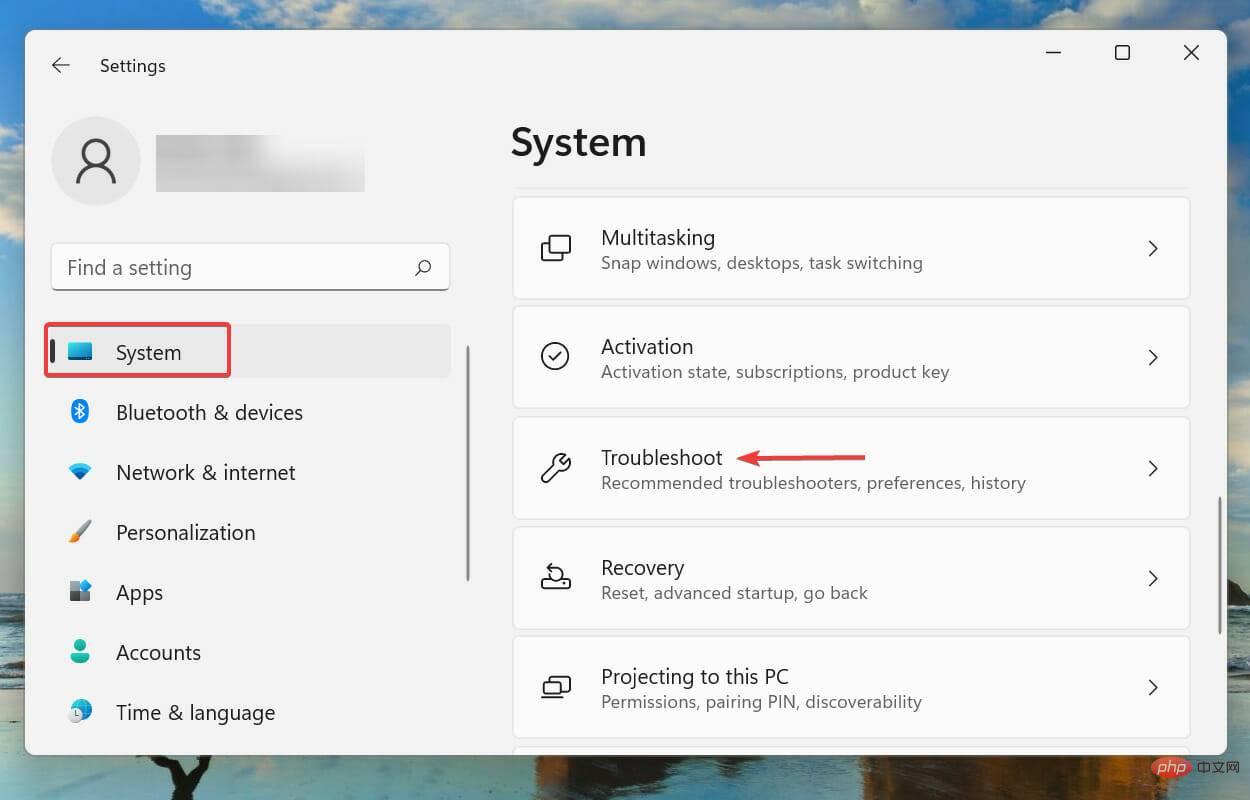 杜比全景声在 Windows 11 中不起作用?立即修复Apr 16, 2023 pm 09:31 PM
杜比全景声在 Windows 11 中不起作用?立即修复Apr 16, 2023 pm 09:31 PM如果杜比全景声在Windows11中无法运行,我该怎么办?1.运行内置音频疑难解答按Windows+I启动“设置”应用程序,然后单击“系统”选项卡右侧的“疑难解答”。接下来,单击“其他疑难解答”。找到并单击播放音频疑难解答旁边的运行按钮。等待疑难解答程序检测到问题,然后按照屏幕上的说明修复错误。每当处理Windows中的错误时,建议您首先为其运行相关的内置疑难解答程序(如果存在)。众所周知,这些可以以最少的努力解决大量问题。2.更新Windows11按Windows+I启动“设置”应用,然后
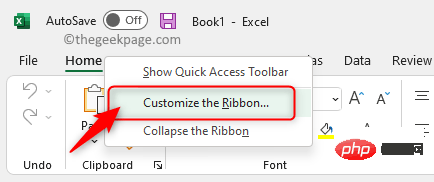 如何在 Microsoft Excel 中显示开发人员选项卡Apr 14, 2023 pm 02:10 PM
如何在 Microsoft Excel 中显示开发人员选项卡Apr 14, 2023 pm 02:10 PM如果您需要录制或运行宏、插入 Visual Basic 表单或 ActiveX 控件或在 MS Excel 中导入/导出 XML 文件,则需要 Excel 中的“开发人员”选项卡以便轻松访问。但是,默认情况下,此开发人员选项卡不会显示,但您可以通过在 Excel 选项中启用它来将其添加到功能区。如果您正在使用宏和 VBA 并希望从功能区轻松访问它们,请继续阅读这篇文章。在 Excel 中启用开发人员选项卡的步骤1. 启动MS Excel应用程序。右键单击顶部功能区选项卡之一的任意位置,然后在出现
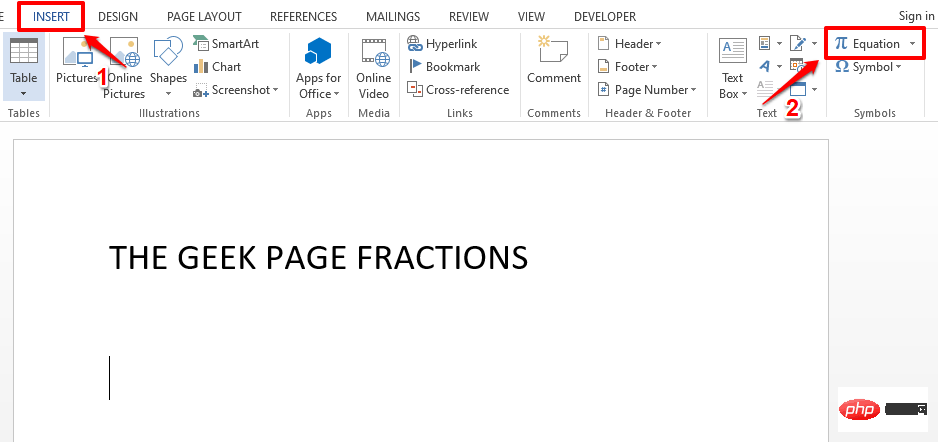 如何在 Microsoft Word 中写分数Apr 13, 2023 pm 02:04 PM
如何在 Microsoft Word 中写分数Apr 13, 2023 pm 02:04 PM我们都知道 Microsoft Word 非常灵活,并且具有许多功能。最重要的是我们知道如何充分利用 Microsoft Word 提供的功能。其中一个令人惊奇的功能是在您的 Word 文档中插入一个分数值。许多地方都使用分数。但是当我们在 Word 文档中插入分数时,它的格式并不总是像分数一样。在本文中,我们通过一些非常简单的步骤解释了如何轻松地将格式良好的分数数字插入到 Microsoft Word 文档中。继续阅读,了解如何轻松掌握这个超级方便的 Word 技巧。在 Microsoft W

Hot AI Tools

Undresser.AI Undress
AI-powered app for creating realistic nude photos

AI Clothes Remover
Online AI tool for removing clothes from photos.

Undress AI Tool
Undress images for free

Clothoff.io
AI clothes remover

AI Hentai Generator
Generate AI Hentai for free.

Hot Article

Hot Tools

ZendStudio 13.5.1 Mac
Powerful PHP integrated development environment

SAP NetWeaver Server Adapter for Eclipse
Integrate Eclipse with SAP NetWeaver application server.

EditPlus Chinese cracked version
Small size, syntax highlighting, does not support code prompt function

DVWA
Damn Vulnerable Web App (DVWA) is a PHP/MySQL web application that is very vulnerable. Its main goals are to be an aid for security professionals to test their skills and tools in a legal environment, to help web developers better understand the process of securing web applications, and to help teachers/students teach/learn in a classroom environment Web application security. The goal of DVWA is to practice some of the most common web vulnerabilities through a simple and straightforward interface, with varying degrees of difficulty. Please note that this software

Atom editor mac version download
The most popular open source editor







